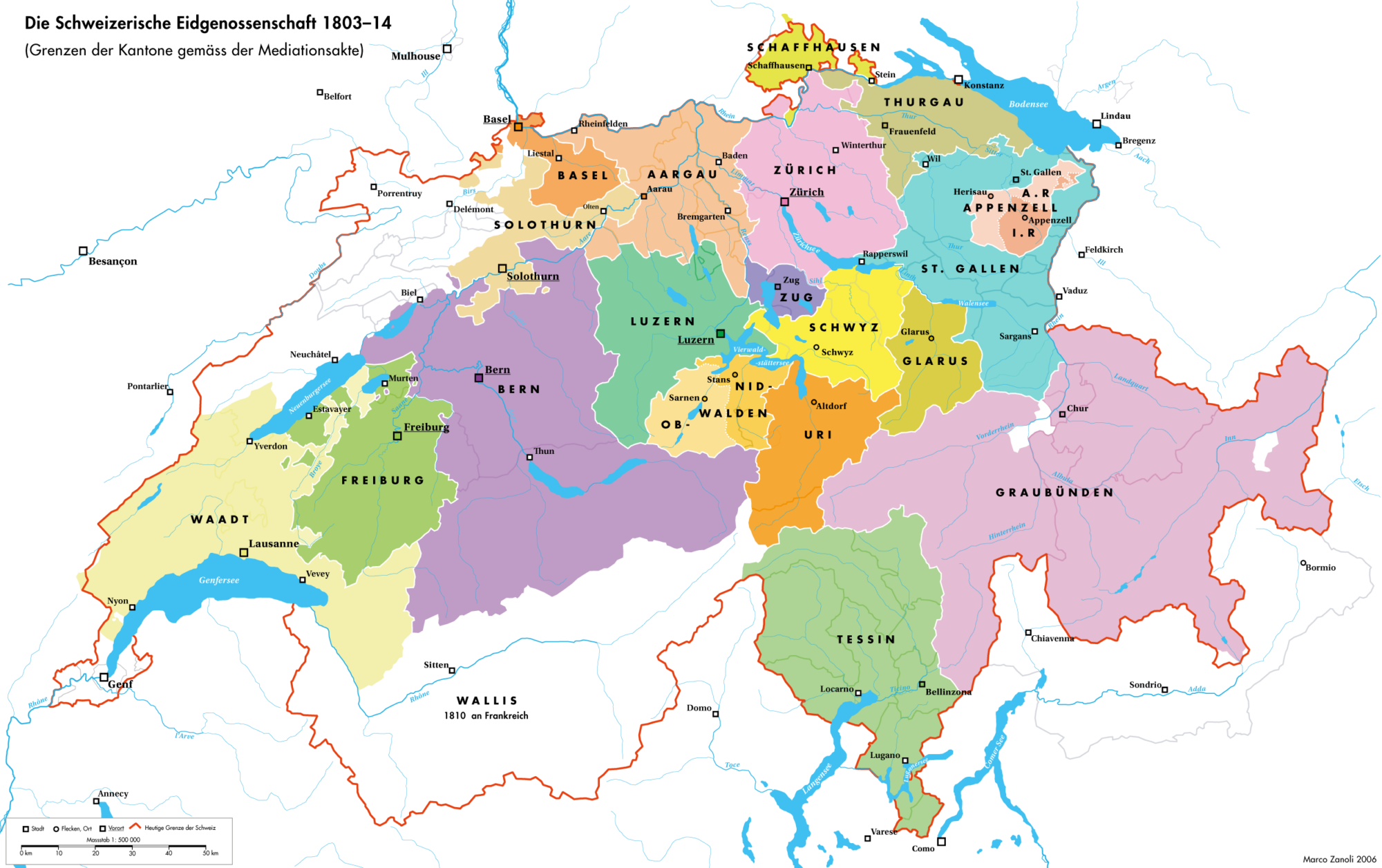In the following line of succession of Swiss statal entities, the cantons, city states or territories mentioned in «CARICOM Compilation Archive» have been italicised. The line is presented chronologically backwards, with maps of the respective statal entities.

Schweizerische Eidgenossenschaft (today’s «Switzerland»)
a federal state, created in 1848 as successor state of the «Schweizerische Eidgenossenschaft»

Schweizerische Eidgenossenschaft
comprising the 19 sovereign cantons of Zürich (Zurich), Bern (Berne), Luzern (Lucerne), Uri, Schwyz, Unterwalden, Glarus, Zug, Freiburg (Fribourg), Solothurn (Soleure), Basel (Bâle), Schaffhausen, Appenzell, St.Gallen, Graubünden (Grisons), Aargau, Thurgau, Tessin, Waadt (Vaud), Wallis (Valais), Neuenburg (Neuchâtel), and Genf (Geneva), created in 1803 as successor state of the «Helvetian Republic».

Helvetische Republik
a centralised state («une et indivisible“) under French control, created in 1798 by Napoleon as successor state of the «Alte Eidgenossenschaft»

Alte Eidgenossenschaft («Old Confederacy», «Ancien Régime»)
comprising since the 14th century the sovereign cantons of Uri, Unterwalden, Luzern, Glarus, Zürich, Zug, Bern, Freiburg, Solothurn, Basel, Schaffhausen, and Appenzell, including their associates, condominiums and protectorates, among which the Abbey of St.Gallen, the City of St.Gallen, the «Sieben Zenden» (an independent federation in the Valais), the Three Leagues (independent federations on the territory of the Grisons), the City of Geneva, the County of Neuchâtel, Payerne, Stein am Rhein, County of Gruyère, Valley of Saanen, Bishopric of Basel, Landgraviate of Thurgau, and County of Toggenburg.